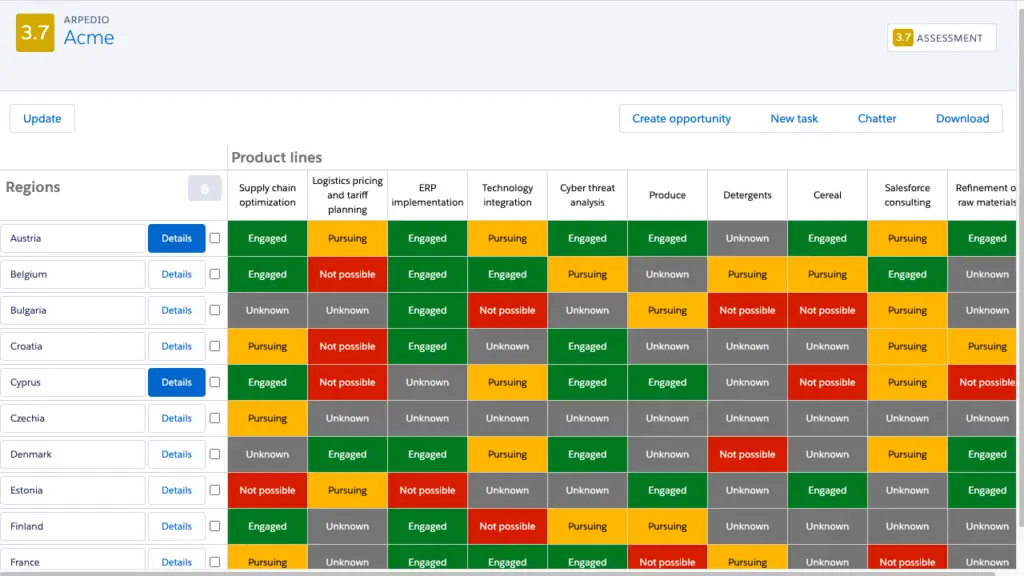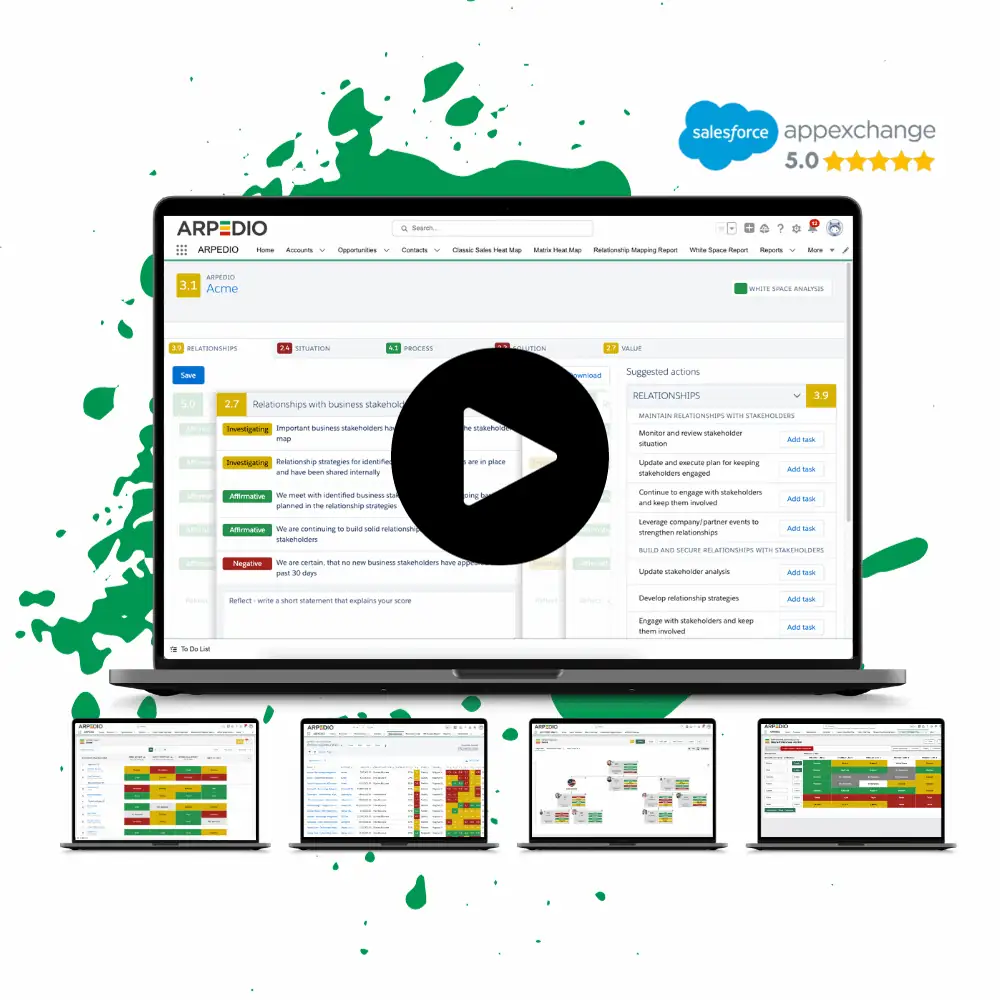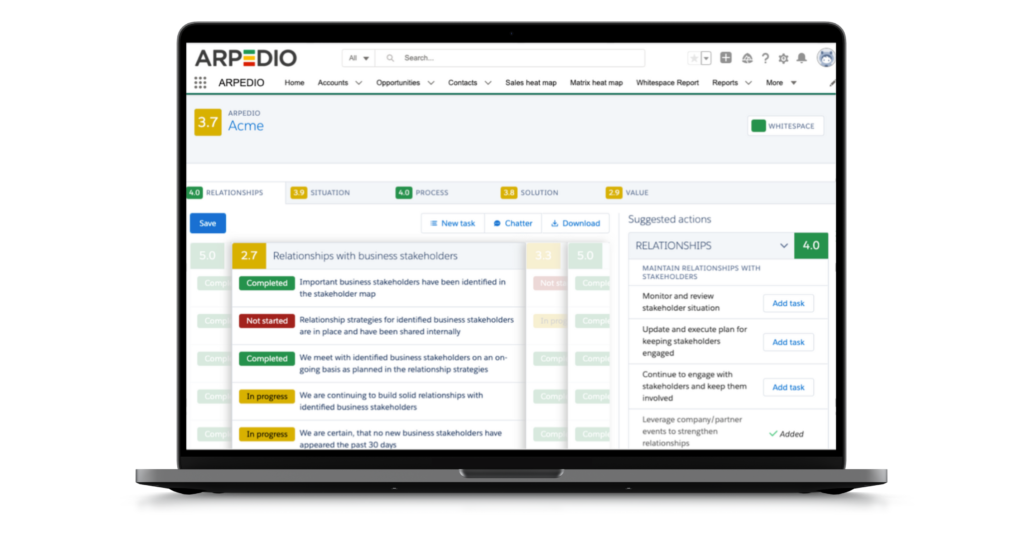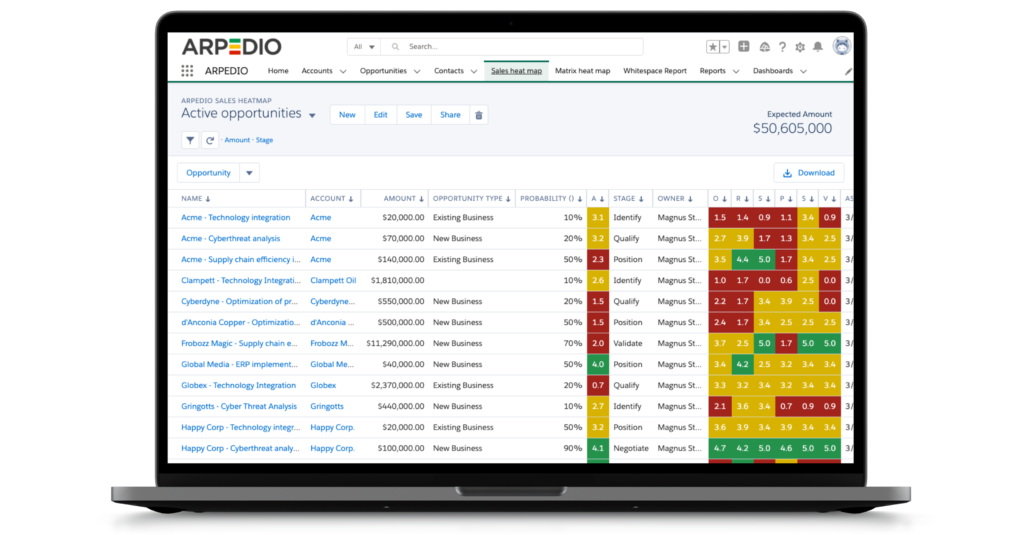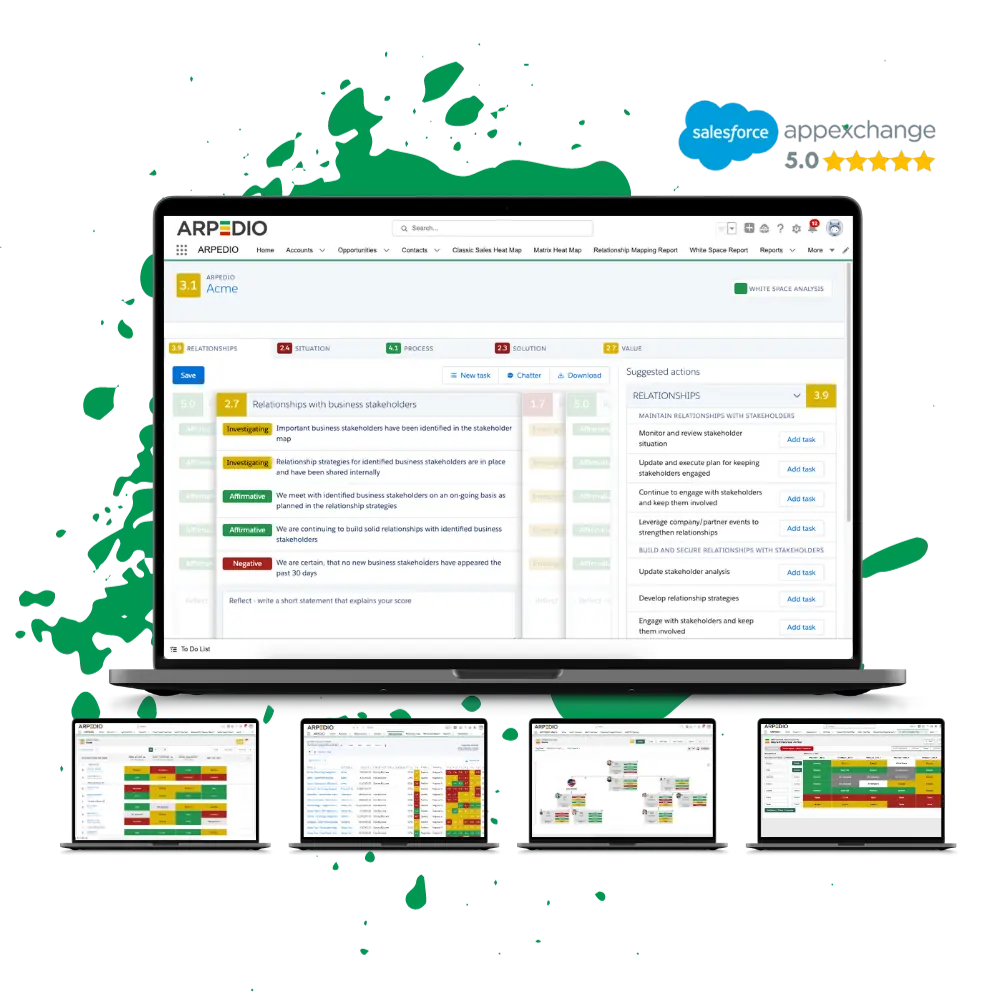Cross-selling and upselling are sales techniques aiming to optimize revenue by increasing the amount a customer spends with your business. While cross-selling is a sales strategy with the purpose of getting customers to buy related or complementary products or services, upselling encourages customers to purchase a comparable yet more high-end product than the one they already settled for. Although the two are sometimes used interchangeably, cross-selling and upselling each have their own explicit advantages. However, that doesn’t mean they can’t be used simultaneously–in fact, they can be very effective when used in tandem.
Table of Contents
An Introduction to Cross-selling and Upselling
Cross-selling and upselling are two advantageous sales strategies essentially designed to generate more revenue from existing customers. While their end goal is the same, they operate in different ways: Upselling aims to convince the customer to buy a higher-priced ‘version’ of a product or service, whereas cross-selling focuses on providing personalized recommendations of related or complementary products or services. Keep reading and find out what cross-selling and upselling are, why they are important, and how to cross-sell and how to upsell in the most efficient way.
What is Cross-selling?
Let’s start with the basics: Cross-selling is when you sell one or more related or supplementary products or services to an already existing customer. Thus, it’s a means of prolonging your customer’s revenue potential, which makes it an exceptional growth strategy.
What is Upselling?
Moving on to upselling: Upselling is a sales strategy where a seller encourages a customer to purchase a comparable but more expensive item, an upgrade, or an add-on to the product/solution they’re already paying for, or intended to pay for – with the sole purpose of generating additional revenue. In other words, upselling is a sales technique that motivates the customer to invest (even) more money in your company.
What’s the difference between Cross-selling and Upselling?
Upselling and cross-selling are often used interchangeably in sales conversations. Maybe because they’re both strategies that involve approaching existing customers with the purpose of convincing them to buy even more products or services from you. However, while cross-selling and upselling do share some similarities, they are indeed two separate entities.
In order for you to implement them successfully into your business, it’s important to understand how they differ from one another as well as what explicit value they each bring to the customer. And luckily we have good old McDonald’s to perfectly demonstrate the distinction between upselling and cross-selling:
- “Would you like to Supersize that?” ––> upselling
- “Would you like fries with that?” ––> cross-selling
To specify, in upsell you add to the product or service a customer is already paying for, while cross-sell is offering a different yet complementary product or service. While different, upselling and cross-selling are surely related and both very useful in 1) increasing your revenue and 2) foreseeing your customer’s needs. Yet, to get it right, it’s necessary that you have a deep understanding of your customer’s need(s), so you are able to offer the right product/service at the right time.
Let’s take a look at a few more cross-selling and upselling examples below:
Best Cross-selling Examples
To get everyone onboard, let’s take a look at a few examples of cross-selling. A cross-sell is based on what your customer is interested in, or what they’re already purchasing. For instance, let’s say your company offers a complementary product or service that can improve a customer’s initial purchase–in this case, cross-selling is a great means to generate additional revenue.
To paint a simple picture of what cross-selling is, imagine you sell a new iphone to a customer. Maybe that same customer would benefit from a pair of earbuds or a protective case to go with that new phone. This is essentially what cross-selling looks like. Cross-selling is also when you go on a plane, and the stewardesses walk down the aisle offering food and drinks at an additional cost. Cross-selling, it’s all about identifying that product or service that will enhance your customer’s experience.
Best Upselling Examples
When you set out on your upselling adventure, it will usually involve promoting more ‘fruitful’ products or services to your customer. However, sometimes all it takes is exposing the customer to options that they simply hadn’t considered, such as introducing a larger screen to a customer looking for a new television.
Another upselling example would be if you convince your buyer to upgrade from an Iphone 12 to an Iphone 14, or get them to add a warranty when they purchase their Iphone. Upselling is also when you manage to get your customer to upgrade their flight tickets from economy to first class. Essentially, upselling is convincing your customer of the added value a more expensive product or service can bring.
Are you already using Salesforce?
Potential Disadvantages of Upselling and Cross-selling
If you don’t plan your upselling efforts thoroughly, this sales strategy can have a negative impact on the customer’s experience with your company. Upsells that are too aggressive will typically be perceived as off-putting and too salesy, which can potentially make the customer lose trust in your company.
Marketing products or services beyond the customer’s interests can also be a means to frustration. This mismatched experience can have a negative impact on the decision-making process and–in a worst case scenario–ultimately make the customer leave the negotiation table for good.
Now, for cross-selling to work there has to be a clear connection between the product/service your customer is already purchasing and the additional product/service you’re trying to sell to them. To simplify: Promoting a printer when your customer just bought a new iphone isn’t a good fit.
If you’re not smart about your cross-selling, it can easily turn into a headache for the customer, not to mention a very ineffective sales technique. You need to plan well and make sure your approach is backed by appropriate data, otherwise you risk driving the customer away.
The same goes if you for instance call up a customer, who usually places his order via email. That person might find it inconvenient to spend time talking to you on the phone. If you want to play your cards right, you make sure you approach your customer in the right way, at the right time, with the right solution(s).
Below, we’ve put together a list of potential upselling and cross-selling drawbacks:
- Annoying customers if you’re too pushy.
- Decreasing trust if customers experience a constant feeling of being sold to.
- Reducing satisfaction if poorly executed at the wrong time and/or with unfit offerings.
- Appearing desperate if customers sense you’re out of options or have a hard time selling your products/services.
- Getting distracted from customers needs if you’re too caught up on cross-selling.
- Creating bad customer experiences if customers feel ‘forced’ to make a purchase.
Just like upselling, cross-selling must be done in a subtle and polite manner, offering products that are truly relevant and valuable to the customer. Our number one advice is to always keep the customers’ needs in mind before cross- or upselling and make sure you offer them options that align with their buying intent.
Why is Cross-sell and Upsell Important?
One might think that once a sale is made, that’s the end of that. But in fact, there’s heaps of untapped business potential after the point of sale – and this is where sales strategies like cross-selling and upselling can really prove their value, as they both target already existing customers.
According to Harvard Business Review, acquiring a new customer is anywhere from five to 25 times more expensive than retaining an existing one. This number, of course, depends on your industry and which study you find the most believable–but, it makes a lot of sense really: Trying to find a new client can be extremely time-consuming and often requires more resources, whereas keeping existing customers happy can be done with a lot less effort. Thus, cross-selling and upselling are important because they can help a business increase its revenue without having to acquire new customers.
In line with this, another research shows that the hit rate of selling to an existing customer is 60-70%, whereas succeeding with a sale to a new customer is only 5-20%. With this in mind, it’s tempting to conclude that existing customers are more profitable than new ones, or at least, they are much easier to convince to spend more money with your business compared to new customers.
Fred Reichheld and Bain & Companybacks this in their research highlighting the value of customer retention: It concludes that increasing customer retention rates by 5% can increase profits by 25% or more. This proves that customers who have already purchased a product/service from your company are much more likely to buy from your company again given that they’re happy with their purchase.
And as these happy customers buy from you again (and again), your business’ operational costs decrease–while your overall profit increases. Happy customers are also much more likely to recommend your company to others, and won’t mind paying a higher price to stay in business with you rather than taking the leap to a competitor whom they have no previous experience with.
What is ‘Customer Churn Rate’?
Now, we’ve just established that retaining customers is very valuable. But how do you actually find out if your company is any good at this? Enter Customer Churn Rate!
Customer churn rate is a metric used in business to describe the rate at which customers stop doing business with a company. It’s typically expressed as a percentage of total customers at the beginning of a period (such as a month or a year) who no longer do business with the company by the end of that period. For example, if a company starts a month with 100 customers and ends the month with 90 customers, the customer churn rate for that month would be 10%.
Churn rate is an important metric for companies to track, as it indicates whether a business is losing customers at an unsustainable rate. High churn rates can also be an indication that a company is not meeting the needs of its customers, or that its products or services are not competitive with those of its rivals.
In order to minimize the customer churn rate, companies must analyze the reasons why customers are leaving and try to address those issues. Some common strategies to reduce churn include improving customer service, offering promotions or discounts to retain customers, and regularly soliciting customer feedback to gain insights into areas for improvement.
All in all, doing whatever you can to keep your existing customers happy can be very beneficial, as it opens up to cross-sell and upsell opportunities.
Benefits of Cross-selling and Upselling
At this point, the importance of cross-selling and upselling should be clear to everyone, so let’s take a look at the actual benefits of successful cross- and upselling. Besides boosting the bottom line of your business, there are plenty of other advantages to look forward to. Just make sure you suggest products/services that are relevant to your customer’s needs and consider if the timing is right before you embark on your cross- and/or upsell adventure. Below, we’ve gathered the top benefits of cross-selling and upselling.
Cross-selling and Upselling benefits include:
By offering customers related products or upgraded versions of what they are already purchasing, businesses can increase their revenue – without having to acquire new customers.
Cross-selling and upselling can help businesses provide customers with products or services that better meet their needs, which can lead to increased customer satisfaction and loyalty.
Offering related products or upgrades can lead to customers spending more money per transaction, which can lead to increased profitability for the business.
Cross-selling and upselling to existing customers can be less expensive than acquiring new customers, which can help businesses reduce marketing costs.
Cross-selling and upselling can help businesses move inventory that may be slow-selling, which can help improve inventory management and reduce the risk of stockouts.
By understanding what a customer has bought in the past, a company can offer products or services that are more relevant to their needs, thus creating a better customer experience.
In conclusion, upselling and cross-selling to your customers allow you to experience profit quicker and thus receive a better ROI (return on investment). When you’ve already done the hard work of marketing, found and sold successfully to your customer, you might as well realize the full potential of your customer. Don’t you agree?
ARPEDIO’s White Space Analysis Software can help you uncover cross-sell and upsell opportunities directly in Salesforce. Discover the blind spots and get ready to increase revenue.
Are you already using Saleforce?
#1 Account-Based Selling Platform
Powerful alone. Superior together.
Boost win rates and reduce sales cycles. Enhance forecast accuracy.

